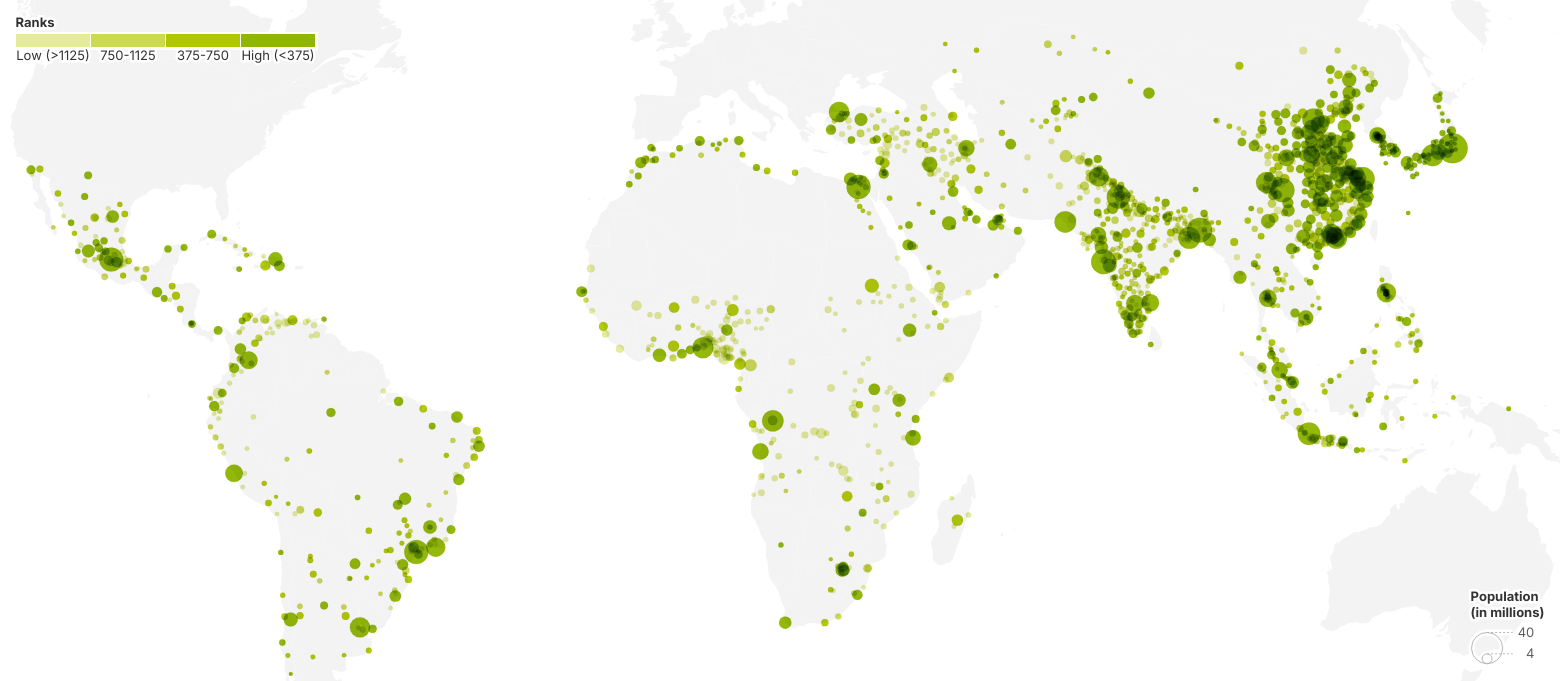This sub-index measures the number of air passengers flying to a city’s airport, as well as the airport’s connectivity to other cities both in the domestic and international market. It assesses the strength of the city’s air cargo sector as well as its container ports and the number of container ship sailings. And finally, it includes a measure of major road networks.
How they link to megatrends
The biggest mobility hubs benefited from decades of globalization and, not
surprisingly, much of the region’s container port capacity lies in China. But that’s changing as
global supply chains shift and countries ranging from India and Morocco to Mexico and Turkey are all
seeing new investment in transport infrastructure.
National economic policies and growth
rebalancing are also driving investments. This is especially the case in Saudi Arabia, where the
country’s Vision 2030 includes a major rewiring and expansion of the logistics sector, from new
airlines and airports to Neom’s Oxagon, a giga-project including an entirely new port and smart
supply chain hub.
Unique features of mobility connectors
Mobility hubs are most often national or provincial capitals, typically located
near industrial clusters. They have major airports to serve both business and leisure travelers as
well as a large number of ports and regular container ship sailings to serve export manufacturing
sectors. They also provide easy land access to larger neighboring markets or to landlocked
neighbors, especially in Africa.
It is that combination of strong sea and air travel, as
well as connectivity to a large domestic and international market, that drives cities higher in our
rankings, and why Shanghai naturally is ranked at the top.
In selecting eight Mobility Connectors to profile, we chose two high-ranking cities from each region to show the diverse circumstances that prevail across such broad geographies and the range of solutions cities are pursuing. Bogotá ranks lower than Dubai, for example, but it’s highly ranked in Latin America.
What might the future look like?
The region’s biggest mobility hubs will only get larger as intra-regional travel and trade grows. Most of the region’s biggest airports and seaports are already committed to expansion plans. However, it’s the rise of midsized mobility hubs that will surprise, especially in countries with large domestic markets, as the rise of midsized cities triggers a boom in domestic flows.
Why does it matter for business?
The rise of midsized mobility hubs will create new aviation corridors similar to domestic corridors in Europe and the United States. The expansion of supply chains across regions will similarly drive new investment into regional ports and airports. But with public debts rising regionally, governments will need to be careful about where they place their high-cost mobility bets. Midsized mobility hubs will meanwhile open up new opportunities for the retail, hospitality, and logistics sectors.
1,500 Mobility Connectors By Region
Population
<500k
500k-1 million
1-5 million
>5 million
1500 (Low Ranks)
>
(Top Ranks) 1
Asia
Middle East
Latin America
Africa
Country
Rank#
Population
1,500 Mobility Connectors By Region
Population
<500k
500k-1 million
1-5 million
>5 million
1500 (Low Ranks)
>
(Top Ranks) 1
Asia
Middle East
Latin America
Africa
Country
Rank#
Population









